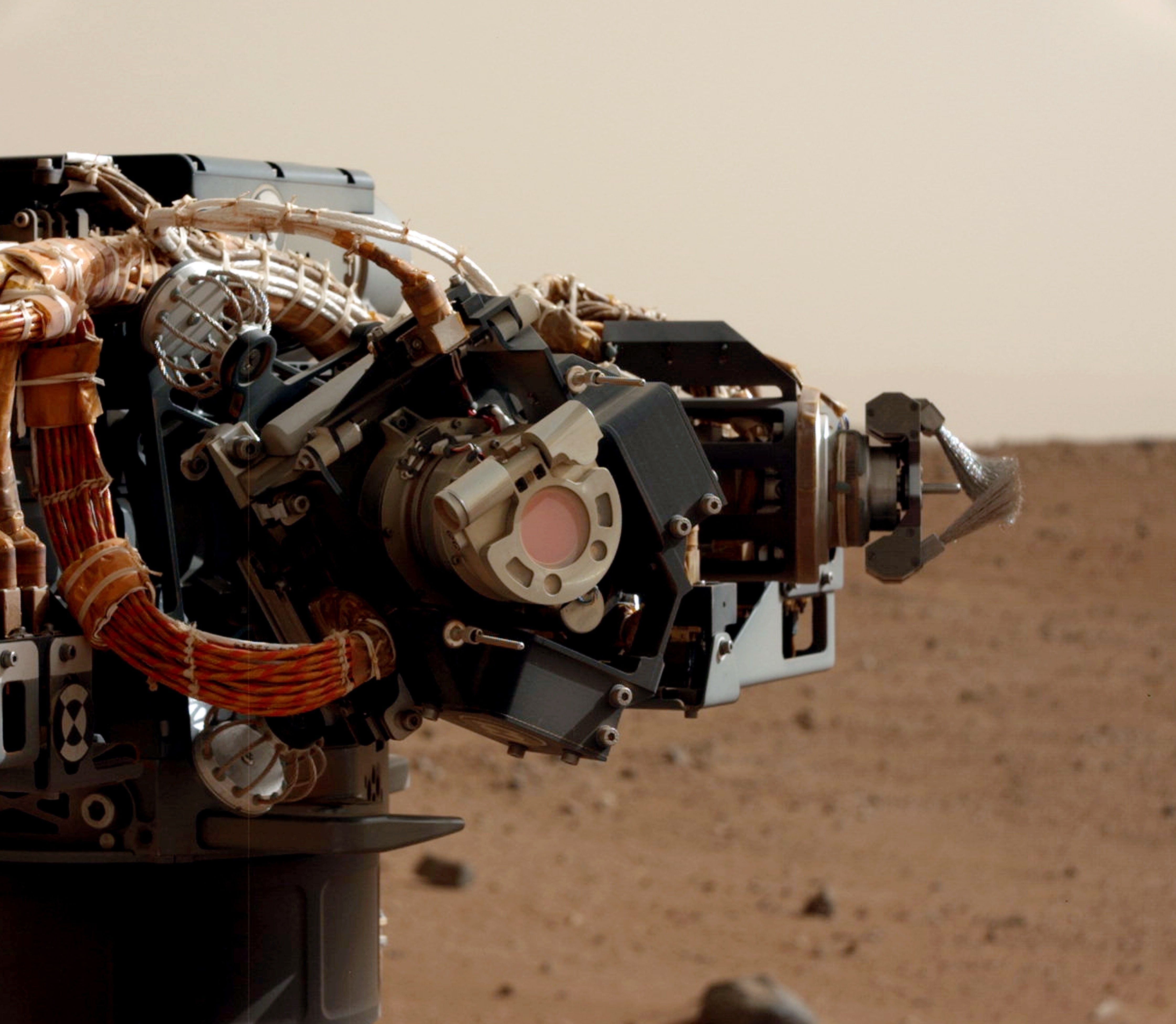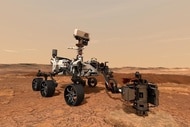Create a free profile to get unlimited access to exclusive videos, sweepstakes, and more!
Mars Curiosity sends back one giant Martian panorama…and (maybe) a clue of past life

The Curiosity rover’s extended stay on Mars has proven to be one of NASA’s biggest recent success stories. More than seven years after its arrival at the Bradbury landing site on the Martian surface, Curiosity has just sent back the largest, most detailed panoramic image ever of the Red Planet’s landscape … along with an intriguing new discovery that could yield fresh insights into whether Mars has ever harbored microbial life.
Between Nov. 24 and Dec. 1 of last year, NASA’s Jet Propulsion Laboratory captured what the agency describes as the “highest-resolution panorama yet of the Martian surface,” compositing more than 1,000 individual images taken by the telephoto zoom lens on Curiosity’s Mast Camera. The image below is actually the lower-resolution version of the two that NASA has made available; a higher-res version (which omits the rover from the picture, thanks to the extra zoom on the telephoto) is available as 2.43-gigabyte download on the NASA/JPL host page.
NASA also shared a super-informative video highlighting just how much landscape detail the new image contains, zooming in on deep-field features like the rim of the crater that Curiosity calls home; as well as the exposed remnants of the Greenheugh Pediment — “a vast sheet of rock draped over the side of a mountain.”
Early chemical analysis of another Curiosity discovery — the presence in Martian soil of organic compounds called thiophenes — also has researchers speculating that the compounds could suggest that living bacteria once had a foothold on the Red Planet. According to Washington State University astrobiologist Dirk Schulze‑Makuch, part of an international team assessing the data, scientists typically associate thiophenes here on Earth with the breakdown of once-living organisms, though their presence on Mars may have other explanations that can’t yet be ruled out.“We identified several biological pathways for thiophenes that seem more likely than chemical ones, but we still need proof,” he explained. “If you find thiophenes on Earth, then you would think they are biological, but on Mars, of course, the bar to prove that has to be quite a bit higher.”
Researchers speculate that Mars’ warmer, wetter conditions 3 billion years ago may have harbored the conditions necessary for microbes to thrive, although they say the data are still insufficient to rule out other explanations for the thiophenes’ presence — including chemical reactions from past meteor impacts, or other super-hot events that might have caused the “thermochemical sulfate reduction” process required for the unique compounds to form.
While Curiosity’s data-collecting abilities limit researchers’ ability to pinpoint the still-elusive answer, this year’s scheduled launch of the Rosalind Franklin rover should end up offering more details. The new rover “will be carrying a Mars Organic Molecule Analyzer, or MOMA, which uses a less destructive analyzing method that will allow for the collection of larger molecules,” reports WSU News.



























